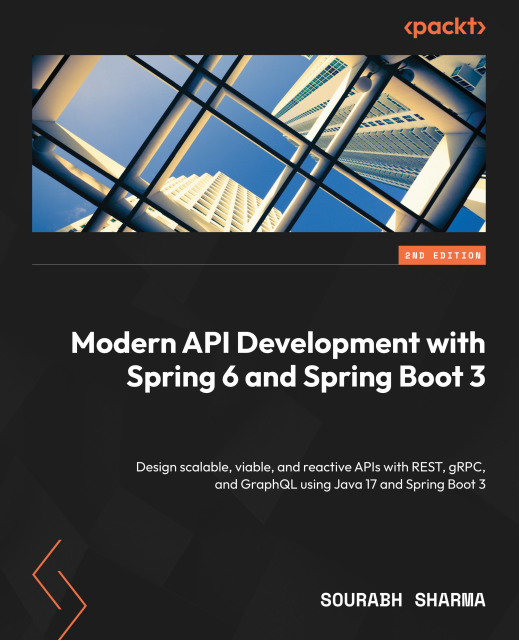On a previous post I provided a simple example on how to achieve aspect orientation in spring by using a ProxyFactoryBean and implementing the MethodBeforeAdvice interface.
On this example we will learn how to achieve aspect orientation by using Spring boot and Aspect4j annotations.
Let’s start with our gradle file.
group 'com.gkatzioura'
version '1.0-SNAPSHOT'
apply plugin: 'java'
apply plugin: 'idea'
apply plugin: 'spring-boot'
sourceCompatibility = 1.8
buildscript {
repositories {
mavenCentral()
}
dependencies {
classpath("org.springframework.boot:spring-boot-gradle-plugin:1.3.3.RELEASE")
}
}
repositories {
mavenCentral()
}
dependencies {
compile("org.springframework.boot:spring-boot-starter-web") {
exclude module: "spring-boot-starter-tomcat"
}
compile("org.springframework.boot:spring-boot-starter-jetty")
compile("org.slf4j:slf4j-api:1.6.6")
compile("ch.qos.logback:logback-classic:1.0.13")
compile("org.aspectj:aspectjweaver:1.8.8")
testCompile("junit:junit:4.11")
}
Apart from the spring boot plugins we have to include the aspectjweaver package.
The application class
package com.gkatzioura.spring.aop;
import org.springframework.boot.SpringApplication;
import org.springframework.boot.autoconfigure.SpringBootApplication;
import org.springframework.context.ApplicationContext;
/**
* Created by gkatzioura on 5/28/16.
*/
@SpringBootApplication
public class Application {
public static void main(String[] args) {
SpringApplication springApplication = new SpringApplication();
ApplicationContext applicationContext = springApplication.run(Application.class,args);
}
}
We will implement a service the will fetch a sample for the name specified.
The sample model would be a simple pojo
package com.gkatzioura.spring.aop.model;
/**
* Created by gkatzioura on 5/28/16.
*/
public class Sample {
private String name;
public String getName() {
return name;
}
public void setName(String name) {
this.name = name;
}
}
The service will create a sample object.
package com.gkatzioura.spring.aop.service;
import com.gkatzioura.spring.aop.model.Sample;
import org.springframework.stereotype.Service;
/**
* Created by gkatzioura on 5/28/16.
*/
@Service
public class SampleService {
public Sample createSample(String sampleName) {
Sample sample = new Sample();
sample.setName(sampleName);
return sample;
}
}
So far so good.
Suppose that we want to do some actions before and after creating a sample. AOP in spring can help us to do so.
The createSample function is a JoinPoint
The main concept is to work with Advices. From the documentation advice is an action taken by an aspect at a particular join point.
In our case we want to do some extra logging before the sample gets created.
Therefore we will use the Before advice type.
package com.gkatzioura.spring.aop.aspect;
import org.aspectj.lang.annotation.Aspect;
import org.aspectj.lang.annotation.Before;
import org.slf4j.Logger;
import org.slf4j.LoggerFactory;
import org.springframework.stereotype.Component;
/**
* Created by gkatzioura on 5/28/16.
*/
@Aspect
@Component
public class SampleServiceAspect {
private static final Logger LOGGER = LoggerFactory.getLogger(SampleServiceAspect.class);
@Before("execution(* com.gkatzioura.spring.aop.service.SampleService.createSample (java.lang.String)) && args(sampleName)")
public void beforeSampleCreation(String sampleName) {
LOGGER.info("A request was issued for a sample name: "+sampleName);
}
}
We implemented a function with the @Before annotation. The argument that we provide to the annotation is a pointcut expression. Pointcut expressions assist us in defining the function, that will trigger our advice and the function arguments that should be used.
Therefore before the method createSample gets executed a log message should be displayed on our screen.
Suppose that we want to have more action before and after the method gets executed, or even change the outcome of the createSample function, we can use an @Around Advice.
package com.gkatzioura.spring.aop.aspect;
import com.gkatzioura.spring.aop.model.Sample;
import org.aspectj.lang.ProceedingJoinPoint;
import org.aspectj.lang.annotation.Around;
import org.aspectj.lang.annotation.Aspect;
import org.aspectj.lang.annotation.Before;
import org.slf4j.Logger;
import org.slf4j.LoggerFactory;
import org.springframework.stereotype.Component;
/**
* Created by gkatzioura on 5/28/16.
*/
@Aspect
@Component
public class SampleServiceAspect {
private static final Logger LOGGER = LoggerFactory.getLogger(SampleServiceAspect.class);
@Before("execution(* com.gkatzioura.spring.aop.service.SampleService.createSample (java.lang.String)) && args(sampleName)")
public void beforeSampleCreation(String sampleName) {
LOGGER.info("A request was issued for a sample name: "+sampleName);
}
@Around("execution(* com.gkatzioura.spring.aop.service.SampleService.createSample (java.lang.String)) && args(sampleName)")
public Object aroundSampleCreation(ProceedingJoinPoint proceedingJoinPoint,String sampleName) throws Throwable {
LOGGER.info("A request was issued for a sample name: "+sampleName);
sampleName = sampleName+"!";
Sample sample = (Sample) proceedingJoinPoint.proceed(new Object[] {sampleName});
sample.setName(sample.getName().toUpperCase());
return sample;
}
}
As we can see the aroundSampleCreation Advice, changes the input and also changes the outcome.
You can find the source code on github
